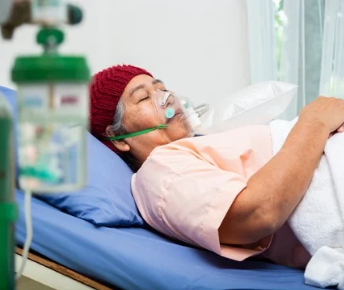Opioid abuse across North India has become one of the most alarming public health challenges of the last decade. From large metropolitan cities to smaller towns and border regions, families are witnessing devastating consequences fueled by easy availability, untreated mental health issues, prescription misuse, and the rapid spread of heroin abuse. This growing crisis has left millions vulnerable, and many people are still unsure how to recognize the problem or where to find support.
We do see individuals and families affected by opioid abuse, drug overdose, and heroin addiction. We see the fear, confusion, and pain that loved ones experience. But we also witness hope, resilience, and recovery. This blog aims to shed light on the realities of this crisis, and help understand that the right care can make a real difference.
The Growing Crisis of Opioid Abuse in North India
North India has seen a rapid escalation in opioid abuse over the past several years. This includes not only illegal substances like heroin but also the widespread misuse of prescription opioids. For many individuals, dependency begins with painkillers used after surgery or injury. When tolerance builds or prescriptions become difficult to access, people may turn to more dangerous substances, leading to heroin addiction or other forms of heroin abuse.
The rise in drug overdose cases across states such as Punjab, Haryana, Uttar Pradesh, Uttarakhand, and even Delhi highlights the severity of the ongoing opioid epidemic. The problem is not limited to specific socioeconomic groups. Working professionals, students, and individuals from rural villages all face similar risks.
The scale of the crisis becomes even clearer when viewed through current statistics. India has an estimated 2.1 crore opioid users, according to the national survey conducted by the Ministry of Social Justice. Out of these, more than 1 crore individuals misuse opioids to a severe degree and require immediate clinical attention.
Punjab alone records opioid use among nearly 15 to 17 percent of its adult population, one of the highest global prevalence rates. Cases of heroin addiction use have also increased across Delhi, Uttar Pradesh, and Rajasthan, with law enforcement reporting a 30 to 40 percent rise in opioid-related arrests and drug seizures over the past five years.
Tragically, deaths caused by drug overdose have multiplied nearly fivefold in the last decade, mainly due to heroin mixed with dangerous synthetic opioids. Despite this, nearly 75 percent of those who need treatment for opioid abuse do not receive it, highlighting a significant gap in rehabilitation availability.
Lack of awareness and misinformation further contribute to the crisis. Many people believe that occasional opioid use is harmless, but they are unaware of how quickly psychological and physical dependence can develop. This lack of understanding often results in delayed treatment, allowing addiction to worsen.
Additionally, rehabilitation services in many northern states are either limited or overburdened. While prescription drug abuse treatment centers and de-addiction facilities exist, they often struggle with high demand, limited staff, and insufficient resources. As a result, the majority of individuals who require treatment do not receive it in time, contributing to chronic addiction and higher relapse rates.
Also Read: Top 5 Most Common Addictions In The US
Why Is Opioid Abuse Spreading So Rapidly?
The rapid spread of opioid abuse in North India can be traced back to a combination of social, medical, and psychological factors that continue to fuel this growing crisis. One of the major drivers is the easy availability of prescription painkillers. Many individuals begin using opioids for legitimate medical reasons, but without strict monitoring, this quickly turns into prescription drug abuse, increasing the risk of dependence and long-term misuse.
At the same time, the increased flow of heroin through border regions has intensified the problem. States close to international boundaries experience faster and cheaper distribution of illegal drugs, which has led to rising levels of heroin addiction, especially among younger populations.
Mental health concerns also play a major role in the escalation of the opioid epidemic. Conditions such as anxiety, trauma, unresolved grief, and depression often push individuals to self-medicate, making them vulnerable to dependency. Without proper emotional or psychological support, opioid use becomes a coping mechanism rather than a medical need. Additionally, limited awareness worsen the situation.
Families often struggle to recognize early symptoms or hesitate to seek help due to fear of judgment. This delay increases the chances of long-term damage, severe dependence, and repeated drug relapse, making recovery even more challenging for the affected person.
Also Read: Tobacco Pouch Addiction in UK and Middle East
The Nagaland Drug Problem: A Hidden Yet Growing Concern
While national attention often focuses on states like Punjab or Uttar Pradesh, many people still ask, “Does Nagaland have a drug problem?” Unfortunately, the answer is yes and the Nagaland drug problem has been steadily growing beneath the surface. Over the past decade, the state has struggled with increasing rates of opioid abuse, rising heroin use, and a significant number of young people engaging in injecting drug practices.
These patterns have quietly intensified due to a mix of social isolation, unemployment, and limited access to structured prescription drug abuse treatment centers, leaving many individuals without the support they need.
What makes the situation more concerning is the shift in drug availability and usage. Nagaland’s proximity to major trafficking routes has increased the flow of heroin and other opioids into local communities. As a result, heroin addiction is no longer limited to urban cities but is spreading into smaller towns and rural areas.
At the same time, the misuse of prescription painkillers remains a major contributor to the crisis, particularly among individuals seeking relief from chronic pain or emotional distress. Without proper education or medical supervision, casual use can quickly escalate into dependence, withdrawal, and recurrent relapse in drug addiction.
Although Nagaland is geographically part of the Northeast and not traditionally grouped under “North India,” its growing drug problem looks similar to the country’s opioid crisis. lack of rehabilitation infrastructure, and insufficient awareness campaigns have made the issue harder to control.
Many families remain unsure of how to seek help or identify early warning signs, leading to delayed interventions and rising rates of drug overdose. Together, these factors highlight the urgent need for accessible treatment options, community support, and harm reduction programs that can address the state’s growing challenges before they deepen further.
Health Risks of Opioid Abuse: What Families Must Know
Long-term opioid abuse affects every part of a person’s wellbeing, often in ways that families may not recognize until the damage becomes severe. The constant use of opioids slows down vital body functions, especially breathing, which is why overdose due to respiratory depression remains one of the most frightening consequences.
People struggling with opioid abuse often experience intense mood swings, depression, anxiety, and irritability, making daily life challenging both for the individual and their loved ones. Prolonged use can also impair memory, concentration, and decision-making, leading to noticeable cognitive decline over time.
The physical effects are equally serious, ranging from liver and kidney stress to weakened immunity and chronic constipation. For those who inject substances, the risks multiply, with higher chances of contracting infectious diseases like hepatitis or HIV. Continued dependence also increases the likelihood of transitioning to stronger drugs, making heroin addiction a very real possibility.
Families need to understand that opioid abuse rarely improves on its own. Early intervention, compassionate support, and immediate access to medical care or rehabilitation can dramatically improve outcomes and reduce the risk of long-term harm.
Also Read: Cannabis, Marijuana, and Hash: Understanding Addiction Risks (UK, India, USA, East Africa)
Conclusion
opioid abuse and heroin abuse in North India is not just a public health issue but a growing humanitarian crisis that affects families, communities, and future generations. As opioid abuse continues to spread across both urban and rural regions, the risk of drug relapse grows, especially for individuals who lack access to consistent support or structured care.
Many people experience opioid abuse alongside emotional distress, social pressure, or untreated mental health struggles, which increases the chances of relapse in drug addiction unless they receive timely intervention. What brings hope, however, is that recovery is absolutely possible with compassionate guidance and evidence-based care.
Early access to heroin addiction treatment, counseling, and long-term follow-up can prevent drug relapse and help individuals reclaim stability, dignity, and wellbeing. No one has to face this alone. With the right support and professional help, healing can begin, and a healthier future is within reach for every person and family affected by substance use in North India.
Frequently Asked Questions
- Why has North India become a hotspot for opioid trafficking?
North India has become a hotspot for opioid trafficking due to its proximity to the “Golden Crescent,” weak border control, and well-established smuggling routes. High demand, unemployment, and gaps in policing make the region vulnerable. Easy availability of heroin and synthetic opioids fuels rapid circulation, creating a widespread and persistent drug supply network. - How are prescription painkillers fueling heroin use?
Prescription painkillers often act as a gateway because people begin using them for genuine pain relief but gradually develop dependence. When these medications become expensive or hard to access, many turn to heroin as a cheaper and more potent alternative. This shift drives rising heroin use and deepens addiction risks. - What role do border routes play in Nagaland’s drug problem?
Border routes play a major role in Nagaland’s drug problem because they allow the easy flow of heroin and other opioids from nearby international trafficking corridors. Limited surveillance, porous boundaries, and active smuggling networks make the region vulnerable, increasing availability and fueling rising addiction rates. - Can community rehab programs really stop relapse in rural areas?
Yes, community rehab programs can significantly reduce relapse in rural areas when they offer consistent counseling, peer support, family involvement, and follow-up care. Their local presence makes treatment accessible, builds trust, and ensures ongoing monitoring of key factors that help prevent relapse in drug addiction and support long-term recovery. - How is heroin abuse different from prescription drug addiction?
Heroin abuse involves an illegal, fast-acting opioid that creates intense highs and a high risk of overdose, while prescription drug addiction starts with medically approved painkillers that become misused over time. Prescription misuse can gradually lead to dependence, whereas heroin abuse often escalates faster and carries greater health and legal risks.
























 Yes, many offer serene environments and solid therapeutic frameworks. However, quality varies, so it’s essential to research accreditation, staff credentials, and therapeutic depth.
Yes, many offer serene environments and solid therapeutic frameworks. However, quality varies, so it’s essential to research accreditation, staff credentials, and therapeutic depth.




